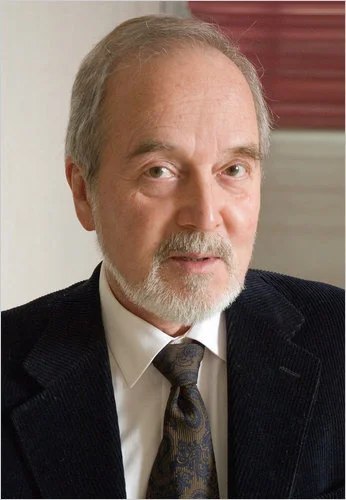Photo of Claudio Bravo, a pale Chilean man with gray hair, mustache, and beard.
“I have my own boat, my own sails, my own wind.”
– Claudio Bravo
Artists are often deeply rooted in one country. For Amrita Sher-Gil it was India. David Paynter had Sri Lanka. Claudio Bravo had not one country, but many. Moving from his native Chile, he travelled through America, Morocco, Spain, and the Philippines without seeming too attached to any one country. A relatively successful painter, he was allowed more freedom to explore the world than many of his contemporaries and gave much more attention to his love of painting than any nationalistic inclination.
Born on November 8, 1936, as the eldest son of a successful businessman and rancher, Bravo was expected to take on the family business. From a young age, Bravo understood this life was not for him, and instead taught himself to draw. He grew resentful of the life his father had envisioned for him. Late in his life he still held a deep dislike for even paintings of cows that reminded him of the life that was set out before him in childhood.
At school one of his teachers saw his talent and brought him to Miguel Venegas Cifuentes in Santiago. This is where he received training in painting, though he is still often seen as a self-taught artist. Though his father only barely allowed his painting, his mother was much more enthusiastic as she had a love for painting as well.
At seventeen Bravo had his first exhibition, and though most of his works were sold, he was always sure to mention that they were sold to mostly family and friends.
Still, he was able to leverage this success into more, painting portraits for commission and saving money so that he could buy boat tickets to Paris, France as that was a hub of artistic activity at the time. On his way there though, he found the method of transport too uncomfortable and got off in Barcelona instead and settled for a while in Madrid.
It was there that he was drawn to the history of the art world, instead of the contemporary activity saying:
“If I had to choose an age into which I’d fit, it would have to be the seventeenth century. During that time artists copied nature in a conceptual way. They transformed the reality of their times as I try to transform the reality of ours.”
Though there are traces of many different artistic styles in Claudio’s work, he understood himself as an aesthetic artist finding inspiration primarily in European art saying:
“[T]he only vestige of a Latin American identity is my Chilean passport. My art has nothing to do with my heritage. I am very connected to the European past- to ancient art, to Renaissance art. Even when I do a painting of a contemporary scene, as in my New York pictures, its roots are in Italian art of the 15th century.”
In his time in Madrid, like his time in Chile, he made money primarily through portraits, which he found a simple task, and he was able to paint portraits for important political and social figures. His placement did limit his contact with the more cutting edge artistic movements as at the time Spain was dominated by a dictator who kept Spain fairly isolated from the rest of Europe artistically.
Fortunately, Bravo was able to find inspiration in the more mundane, including packages that one of his sisters left out in his apartment while she was visiting. These paintings would become some of the most iconic works of Bravo’s life, though at the time he was still sought out mainly for his portrait work.
It was this interest that brought him initially to the Philippines to paint the first lady, where he would stay for six months before returning to Madrid, falling in love with the lighting in the Philippines and how it affected his painting.
It was this fixation on the lighting that certain parts of the world had and his dislike of social obligation that eventually led him to move to Morocco at thirty-six. It was here that he seemed to settle the longest, falling in love with the “Mediterranean light” and the solitude he was afforded, though he kept homes in other countries as well.
The home he made for himself Morocco was extravagant. As he had earned quite a bit of money with his paintings, and filled his space with art. Designing it to inspire him, and surround him with beauty. When one of his friends, Rafael Cidoncha, was training in oil painting Bravo allowed him to stay at one of his homes and Cidoncha would later describe it:
“[Bravo] was a true Renaissance man and his homes were like living museums. They resonated with a spiritual atmosphere created by the exquisite detail of every object as well as its intrinsic beauty. Each object’s placement, proportion, and interaction with other works of art was a reflection of his spatial sense and awareness of order. He was a man of taste with an intuitive eye — with years of practice, yet with an innate spontaneity. Claudio’s passion for art drove him to surround himself with objects of great beauty.”
It was shortly before his move to Morocco he met the man who would become his assistant Bashir Tabchich, who moved with himself and his family to join Bravo in Morocco.
The relationship between Tabchich and Bravo remains slightly muddy, with some sources claiming there was without a doubt a romantic relationship between the two, while Tabchich himself never fully stating that this was the case. Even going so far as to discuss their relationship saying it was like that of “father and son”.
Regardless of the relationship between the two, Bravo was attracted to men and never seemed too invested in hiding that fact, though it is not often mentioned when discussing Bravo’s life. A possible reason for this being that he remained celibate through most of his life. He explained this saying in an interview:
“That (romantic love) was very complicated for me, I’m too passionate and jealous. I decided that my paintings and my animals were my best sources of love. I don’t think I’ve had anyone in my bed since I was 50. I got tired of it.”
Tabchich also spoke of this saying:
“Claudio gave up everything for painting. To his family, to form a new family, to have children, to fall in love, to travel. To have what we call a normal life. That’s why it was as it was, maybe a little strange for others, that they didn’t understand why he didn’t celebrate his birthday, Christmas, New Year or anything.”
This could mean many things; one of the most interesting is that Claudio Bravo may have been on the asexual or aromantic spectrum. While he expressed this as celibacy, it's possible that he was using the only word he had to convey his experience. Given a modern vocabulary, he may have chosen to define himself differently.
That being said, most discussions of this aspect of Claudio’s life were centred on the idea that it was a choice, which sexual and romantic attraction is not. While that could have been influenced by the attitudes of the day, and there is a strong possibility that this choice was made because of something now understood as asexuality or aromanticism, Bravo did make it clear he experienced some form of attraction. Whether that was sexual or romantic, and to what degree it is not clear, but what is clear is that it was to men.
Despite all of this, the great abiding love of his life was painting. Only shortly before his death, Bravo said in an interview:
“I’m ready to die if God so wishes it. Dying will put an end to my need for creativity. I will lie down and sleep restfully for eternity. I’m ready because I’ve finished with my talents. Although I do reserve the belief I can still create marvellous things, I am not clinging to life.”
When he died in his home in Morocco on June 4, 2011, he died satisfied with the work to which he dedicated his life. Tabchich still works in their home, now a combination museum and hotel.
A quote from Cidconcha describes Bravo perfectly:
“He lived to paint, and always surrounded himself with beauty.”
It was in that way that he found and defined his own path. Though he may not have had the relationships with country, children, society, or partners that are often deemed necessary for happiness, Claudio Bravo filled his life with the kind of love that mattered to him. Love of beauty. Love of painting. Love of solitude. Love of friends.
[Disclaimer: some of the sources may contain triggering material]
A hidden gem in Taroudant, Morocco. (2019, July 5). HomeGreens. Retrieved from
https://homegreens.wordpress.com/2019/07/05/a-hidden-gem-in-taroudant-morocco/
Claudio Bravo. (2012, September 6). Retrieved from http://www.claudiobravo.com/en_biography_1.html
Claudio Bravo. (2016, May 20). Artnet. Retrieved from http://www.artnet.com/artists/claudio-bravo/
Daneri, T. A. (2011, June 19). The last light of Claudio Brave. Retrieved from http://www.claudiobravo.com/prensa_2011-06-19b.html
Dethal, L. (2016, February 23). Claudio Bravo Selected Works in Exhibition at Marlborough Gallery. Widewalls. Retrieved from https://www.widewalls.ch/claudio-bravo-marlborough-gallery/
Grimes, W. (2011, June 12). Claudio Bravo, Chilean Artist, Dies at 74. The New York Times. Retrieved from https://www.nytimes.com/2011/06/13/arts/claudio-bravo-artist-who-blended-hyperrealism-and-classical-elements-dies-at-74.html
Harrity, C. (2014, May 3). Artist Spotlight: Claudio Bravo. Advocate. Retrieved from
Sullivan, E. J. (2012, February 6). The Art of Claudio Bravo. Confrontation Magazine, 110. Retrieved from http://confrontationmagazine.org/claudio-bravo/
‘Surrounded with beauty’: Decorative art from the homes and studio of Claudio Bravo. (2016, July 13). Christie’s. Retrieved from


